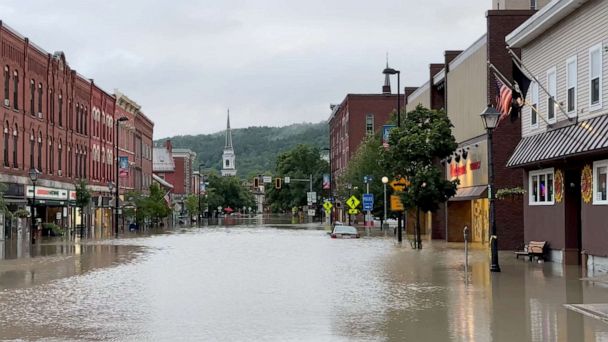Environment & Energy
Related: About this forumHistoric floods in the Midwest put spotlight on America's aging dams - PBS NewsHour
Across the country, new weather extremes are testing aging dams. According to the federal government’s most recent climate assessment, the number of extreme precipitation days in the Midwest has increased 45 percent since the 1950s. Del Shannon, former president of the United States Society on Dams, joins John Yang to discuss. - Aired on 06/30/2024.
BOSSHOG
(39,844 posts)No shouting. No three minute questions. Lots of cogent information in a short period of time. Some call those entities boring but important. I agree. I subscribe wholeheartedly.
Thank You My Dear. Happy Independence Week. Ya know, when real Americans celebrate our freedoms having no desire to end them.
Rhiannon12866
(222,124 posts)And happy Independence Day to you as well! And we have to GOTV to make sure that we keep it! ![]()
![]()
![]()
tornado34jh
(1,294 posts)According to the ASCE (American Society of Civil Engineers), as of 2021, 43% of roads are in poor/mediocre condition. There are 30,000 miles of levees, but a third of them are unaccounted for in both location and condition. Of the approximately 617,000 bridges, 42% of them are more than 50 years old. Unfortunately, we haven't really set aside infrastructure improvement as we should. Per GDP on infrastructure spending, we're behind the likes of France, Spain, UK, UAE, Germany, and Japan to name a few. In fact, the US was ranked 13th in 2019.
But Mother Nature ain't waiting for infrastructure repairs. The weather will do whatever it wants, and it is up to us to make sure we are staying ahead of the curve, which we are not. When Hurricane Sandy hit in October 2012, despite the fact it never made landfall in New York City (it hit Brigantine, NJ and Philadelphia was more in the central path), the wind and rain paralyzed the subway system, and New York City has one of the oldest transit systems in the US and is vulnerable to hurricanes. Considering that the US is one of only three countries that have all of the 5 main climate types (Tropical, Arid, Subtropical, Continental, and Tundra/Alpine), the others being China and India, I would think that we would be good at our infrastructure and keep up with it.
Rhiannon12866
(222,124 posts)We experienced Hurricane Irene here in Northeastern New York and nearby Vermont and the damage was devastating, loss of power, roads washed out and houses and camps near large waterways were simply washed away. We kept hearing about "infrastructure week" during the previous president's term, but nothing was ever done so we're having to catch up now. And, at least here in the nearby city and town, roadwork is ongoing - repairs to the main highway, local roads and bridges (since we have a lot of lakes). Seems like every time I go out, road work is happening somewhere on my journey. ![]()
tornado34jh
(1,294 posts)Around the Bethesda area, I guess when they built it, they went through some soggy terrain, they often close the subway due to water intrusion.
Rhiannon12866
(222,124 posts)At least the weather is decent now here in the Northeast - though we're also getting a lot of rain and there are flooding alerts just to the north and Vermont has been hit with flooding, too. ![]()
Montpelier, Vermont

hunter
(38,930 posts)... and the rivers they impede restored to a natural state.
Off-channel reservoirs do not fill up with sediment, do not block the migration of fish and other wildlife, and are also useful as energy storage systems.
Assuming our civilization survives, eventually even large dams like those along the Colorado River will have to be removed.
That's just the way it is on earth, nothing lasts forever. One way or another everything gets recycled. In the case of dams its best they not begin their transition to rubble in a single catastrophic failure.